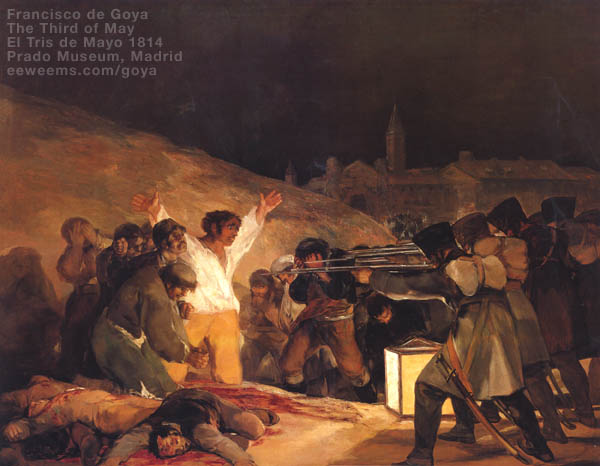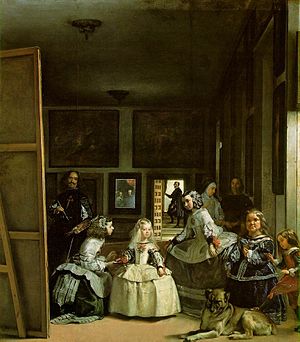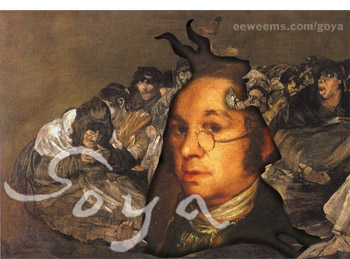Nota Cultural: El Museo del Prado, Madrid
Below is interesting cultural/historical information related to one of the many Spanish speaking countries. There are several ways to participate in this thread. If you are up to a challenge, try translating. You can also add information, pictures, etc. about any of the words mentioned. For instance, you could add a sentence (Spanish and English) about one of the famous artists mentioned or about Carlos III. You could also add pictures of the Museum or information about Madrid. It's your choice. Just make sure it relates to the topic in some way. Here is the first example:Santo Domingo, DR
Nota Cultural: El Museo del Prado, que se encuentra en Madrid, es una de las pinacotecas más importantes del mundo. El Prado tiene la colección más completa de pintura española. Llaman la atención los cuadros de Velázquez, Goya, El Greco, Ribera, Zubarán y Murillo. El museo tiene naturalmente obras de otros pintores célebres como Rembrandt, Bosco, Brueghel, Rubens, Tiziano (Titian), Caravaggio, Gainsborough, etcétera. El edificio de estilo neoclásico fue construido por Juan de Villanueva por orden del rey español Carlos III (1716-88) que reinó a partir del año 1759.
13 Answers
Hi Nicole Sorry I couldn't post earlier, however, as heidita knows my wife and I spent a whole day in the Prado and it wasn't enough. You need at least two or three days to see everything comfortably. We did, however, see 43 of the 50 masterpieces listed in the brochure, the other seven either being restored or out on loan. Believe it or not one of the best experiences for me was viewed from outside. When I first learnt Spanish with the "Linguaphone" course, there was one episode about Madrid which mentioned the famous Museo Del Prado. It also stated that within were housed the paintings of six of the most famous Spanish painters, these being, Ribera, Zurbarán, El Greco, Velázquez, Murillo y Goya. As we approached the building, carved into the stone facade above the main entrance were these six names that I had waited some 35 years to see. De verdad, me humedecieron los ojos, silly I know. Probably my feminine side trying to show itself, hehe. Two of my favourite paintings were Las Meninas by Velázquez, as already posted by Heidi, and The Third of May by Goya.
The Third of May 1808 (also known as El tres de mayo de 1808 en Madrid, or Los fusilamientos de la montaña del Príncipe Pío,[3] or Los fusilamientos del tres de mayo[1]) is a painting completed in 1814 by the Spanish master Francisco Goya, now in the Museo del Prado, Madrid. In the work, Goya sought to commemorate Spanish resistance to Napoleon's armies during the occupation of 1808. Along with its companion piece of the same size, The Second of May 1808 (or The Charge of the Mamelukes), it was commissioned by the provisional government of Spain at Goya's suggestion.
The painting's content, presentation, and emotional force secure its status as a groundbreaking, archetypal image of the horrors of war. Although it draws on many sources from both high and popular art, The Third of May 1808 marks a clear break from convention. Diverging from the traditions of Christian art and traditional depictions of war, it has no distinct precedent, and is acknowledged as one of the first paintings of the modern era. According to the art historian Kenneth Clark, The Third of May 1808 is "the first great picture which can be called revolutionary in every sense of the word, in style, in subject, and in intention".
If anyone ever has the chance of visiting this museum, then my advice is, take it.

One of my favourites... (I love Velázquez)
.

“¿En qué piensas Tú, muerto, Cristo mío?
¿Por qué ese velo de cerrada noche
de tu abundosa cabellera negra
de nazareno cae sobre tu frente?
Miras dentro de Ti, donde alborea
El sol eterno de las almas vivas.
Blanco tu cuerpo está como el espejo
Del padre de la luz, del sol vivífico…”
Miguel de Unamuno
Me gustan estas pinturas:
I like these paintings:
.
.

Claudio de Lorena Vado de un río
Si pudiera, entraría en este cuadro y pasearía un poco por las colinas...
If I could, I would go into this picture and walk a bit across the hills...
.
.

Francisco de Goya y Lucientes El quitasol
Me gustaría ponerme la ropa como ésta de la mujer en el cuadro - no cada día, por supuesto, pero sólo una vez.
I'd like to wear the clothes like these of the woman in the picture - not every day, of course, but only once.
Cultural Note: The Prado Museum, which is found in Madrid, is one of the most important art galleries in the world. The Prado has the most complete collection of Spanish painting. The paintings by Velázquez, Goya, El Greco, Ribera, Zubarán and Murillo draw ones attention (?). The museum naturally has works by other celebrated painters such as Rembrandt, Bosco, Brueghel, Rubens, Tiziano (Titian), Caravaggio, Gainsborough, etc. The neoclassical style building was constructed by Juan de Villanueva by order of King Carlos III of Spain (1716-88) who reigned from the year 1759.
Link to one of the most famous paintings at the Prado: Las Meninas
Translation: Cultural Note: The Prado Museum, which is found in Madrid, is one of the most important galleries in the world. The Prado has a complete collection of Spanish paintings. They call the attention of the tablets of Velazquez, Goya, El Grecco, Ribera, Zubarán and Murillo. The museum naturally has art of other celebrated painters like Rembrandt, Bosco, Brueghel, Rubens, Titian, Caravaggio, Gainsborough, et cetera (etc). The building, which is of neoclassical style, was constructed by Juan of Villanueva by the order of the Spanish king Carlos III (1716-88) who reined from the year 1759.
 the Prado Museum
the Prado Museum
 Las Meninas- Velaquez
Las Meninas- Velaquez
 Felipe II a Caballo- Peter Paul Rubens
Felipe II a Caballo- Peter Paul Rubens
Uno de los cuadros más vistos: Las meninas de Velazquez![]()
Why don't you post your own picture with a caption?? ![]()
Se le ve a Velazquez en el espejo![]()
You can see the painter in the mirror.

"llamar la atención" - "to be of special interest"
Thanks, Nicole, for this wonderful piece about the Prado. Such a priceless collection art and a relaxing way to spend several hours!
Loose Translation:
A Cultural Note: The Museo del Prado,is one of the most important art galleries in the world. The Prado has the most comprehensive collection of Spanish painting to be found. Of particular interest are the paintings of Velazquez, Goya, El Greco, Ribera and Murillo Zubaran. Of course it is worth noting that the museum also holds works by masters such as Rembrandt, Bosch, Brueghel, Rubens, Titian, Caravaggio, Gainsborough, et cetera. This neoclassical building was built by Juan de Villanueva by order of the Spanish King Charles III (1716-88) who reigned from the year 1759.
(Invented by me)
Of particular interest amongst the Spanish painters is Goya (30 March 1746 – 16 April 1828) who is considered to occupy a pivotal role in the history of art. He is seen to be perhaps the last of the Old Masters and one of the first of the moderns. He has had a powerful influential role in the evolution of modern painting and has been closely studied and stylistically emulated by significant 19th and 20th century painters, Monet and Picasso spring to mind, particularly in terms of his confident and fearless handling of paint. Contrast if you wish, the work he did at the royal court for Charles IV and Ferdinand VII of Spain with, at the time, the "scandalous" La maja desnuda *which led to La maja vestida a distinctive painting due to his refusal to “clothe” the nude. This takes us on to a set of aquatint prints entitled The Disasters of War. Saturn Devouring His Son is another chilling work Goya was no sycophant and the early works at the court show little desire to flatter.
Need help understanding the sentence beginning with: Llaman la atención los cuadros ...
Can anyone help her out? ![]()
![]()
Este es un cuadro del rey Carlos III de España. Is it me, or could he be George Washington's twin brother? ![]()
![]()

This is one of a series called "The Black Paintings" by Francisco de Goya.
Este hombre debe tener una migraña. must
This man must have a headache.

This is a self portrait of Franciso José de Goya. See if you can add more information about this famous artist.

El Museo Nacional del Prado clica aquí











